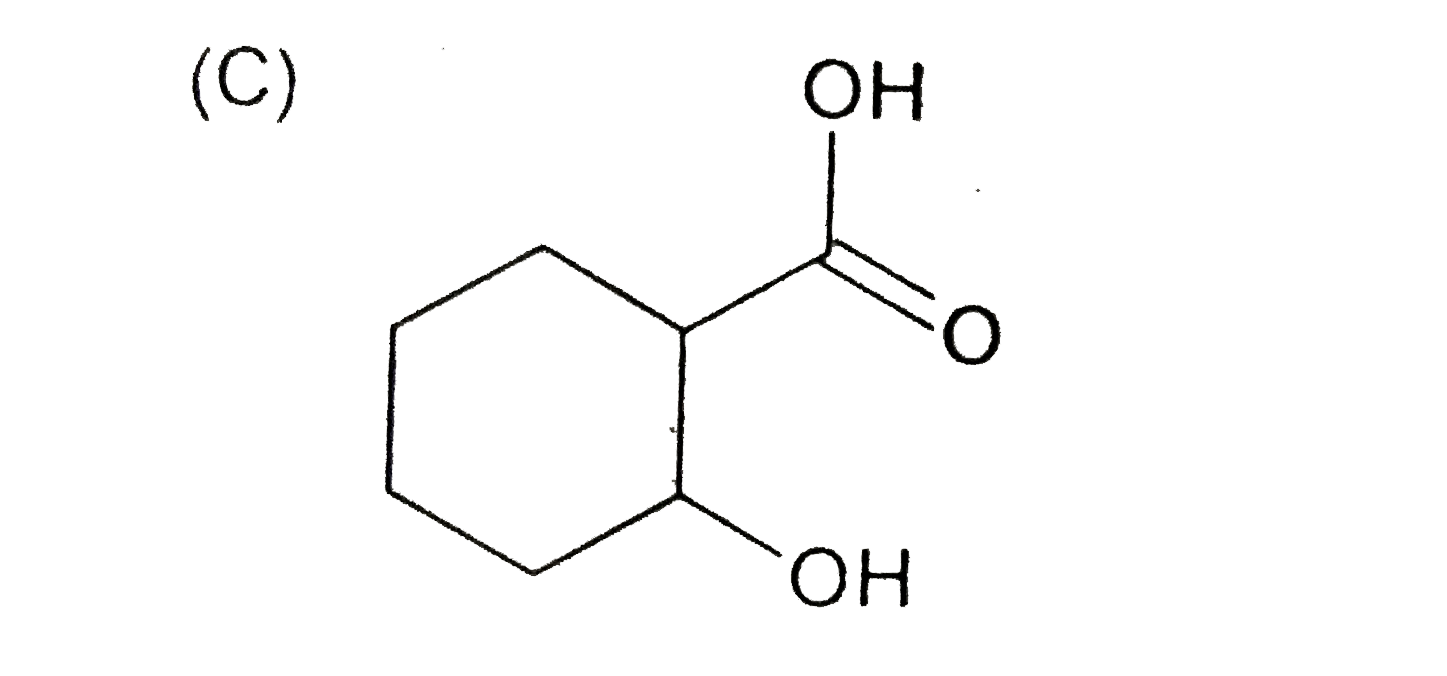Which of the following compounds loses CO2 upon heatiring to 100∘C




The correct Answer is:A
To determine which compound loses CO₂ upon heating to 100°C, we need to analyze the options provided. The key concept here is that certain compounds, particularly beta-keto acids, can lose carbon dioxide when heated due to the stability of the carbanion formed during the process.
1. Identify the Compounds:
We need to analyze the structures of the compounds given in the options (A, B, C, D) to see which one is a beta-keto acid.
2. Understand Beta-Keto Acids:
Beta-keto acids have a structure where a ketone group (C=O) is adjacent to a carboxylic acid group (–COOH). This structural arrangement allows for the formation of a carbanion when CO₂ is lost upon heating.
3. Analyze Option A:
- Option A is a cyclic compound with a carboxylic group and a ketone group.
- Upon heating, it can lose CO₂, forming a stable carbanion due to resonance stabilization from the adjacent carbonyl group.
4. Analyze Option B:
- Option B lacks any electron-withdrawing groups.
- Without stabilization, it is less likely to lose CO₂ upon heating.
5. Analyze Option C:
- Option C has an –OH group, which is an electron-donating group.
- This destabilizes the carbanion that would form if CO₂ were to be lost.
6. Analyze Option D:
- Option D has two carboxylic acid groups.
- The presence of two acidic groups makes it unlikely for CO₂ to be lost, as both would destabilize the formation of a carbanion.
7. Conclusion:
- Based on the analysis, only Option A, which is a beta-keto acid, can readily lose CO₂ upon heating to 100°C due to the resonance stabilization of the carbanion formed.
Final Answer:
The compound that loses CO₂ upon heating to 100°C is Option A (the beta-keto acid).
---
We need to analyze the structures of the compounds given in the options (A, B, C, D) to see which one is a beta-keto acid.
Beta-keto acids have a structure where a ketone group (C=O) is adjacent to a carboxylic acid group (–COOH). This structural arrangement allows for the formation of a carbanion when CO₂ is lost upon heating.
- Option A is a cyclic compound with a carboxylic group and a ketone group.
- Upon heating, it can lose CO₂, forming a stable carbanion due to resonance stabilization from the adjacent carbonyl group.
- Option B lacks any electron-withdrawing groups.
- Without stabilization, it is less likely to lose CO₂ upon heating.
- Option C has an –OH group, which is an electron-donating group.
- This destabilizes the carbanion that would form if CO₂ were to be lost.
- Option D has two carboxylic acid groups.
- The presence of two acidic groups makes it unlikely for CO₂ to be lost, as both would destabilize the formation of a carbanion.
- Based on the analysis, only Option A, which is a beta-keto acid, can readily lose CO₂ upon heating to 100°C due to the resonance stabilization of the carbanion formed.
The compound that loses CO₂ upon heating to 100°C is Option A (the beta-keto acid).
Similar Questions
Knowledge Check
Which of the following compounds will not produce CO2 on reaction with NaHCO3 ?
A B
B C
C D
D
Which of the following compound will not liberate CO2 on reaction with NaOH?
A B
B C
C D
D
Which one of the following compounds give only one isomer upon nitration ?
A B
B C
C D
D
Which of the following compounds do(es) not react with H2+Pd+C?
View SolutionWhich of the following will release CO2 when heated to 1000∘C?
View SolutionHow many of the following compounds give CO2 on reaction with NaHCO3

View SolutionWhich of the following compounds is consumed during the preparation of Na2CO3 by Solvay's process?
View SolutionWhich one of the following compound is a gas (at 0∘C):
View Solution
